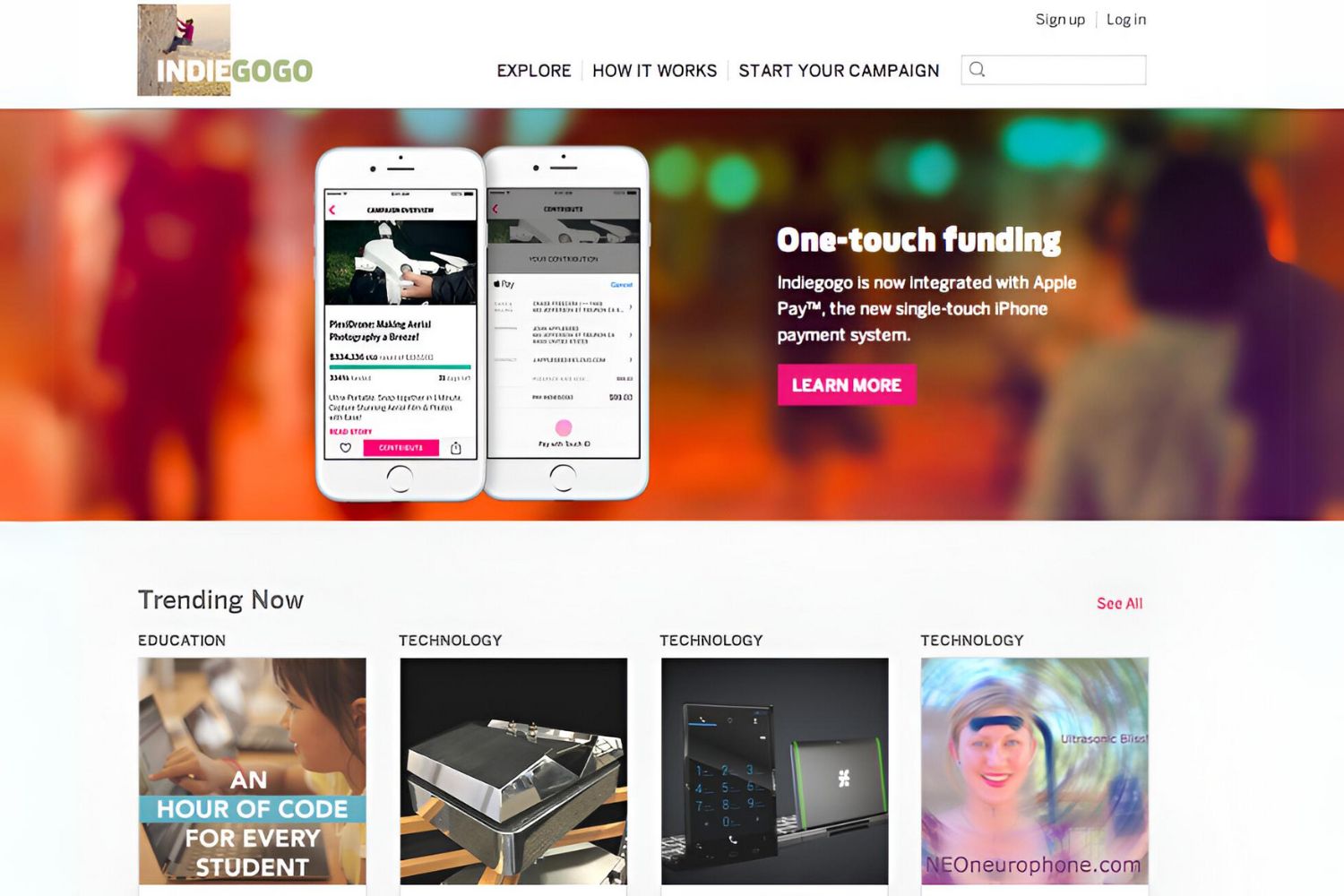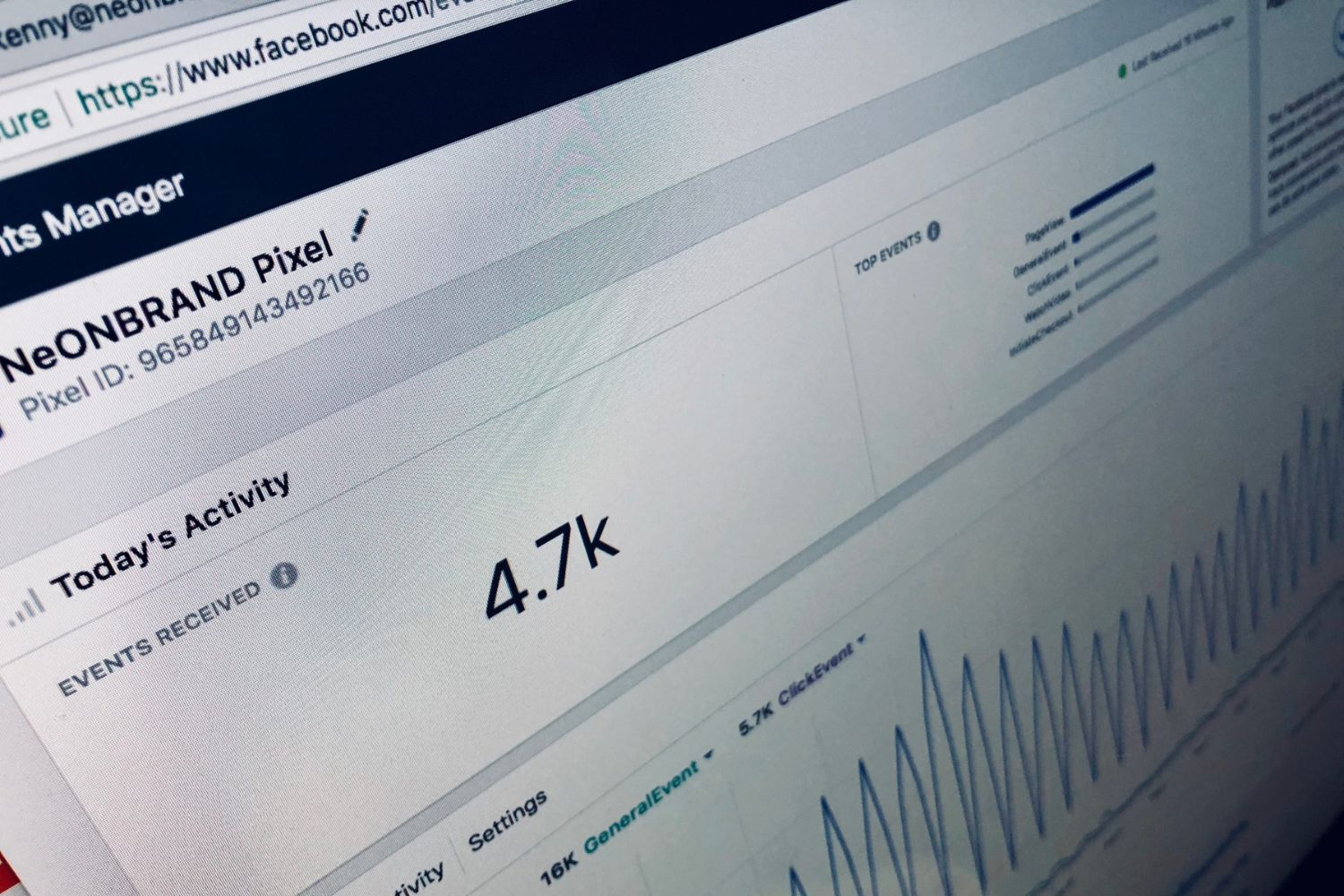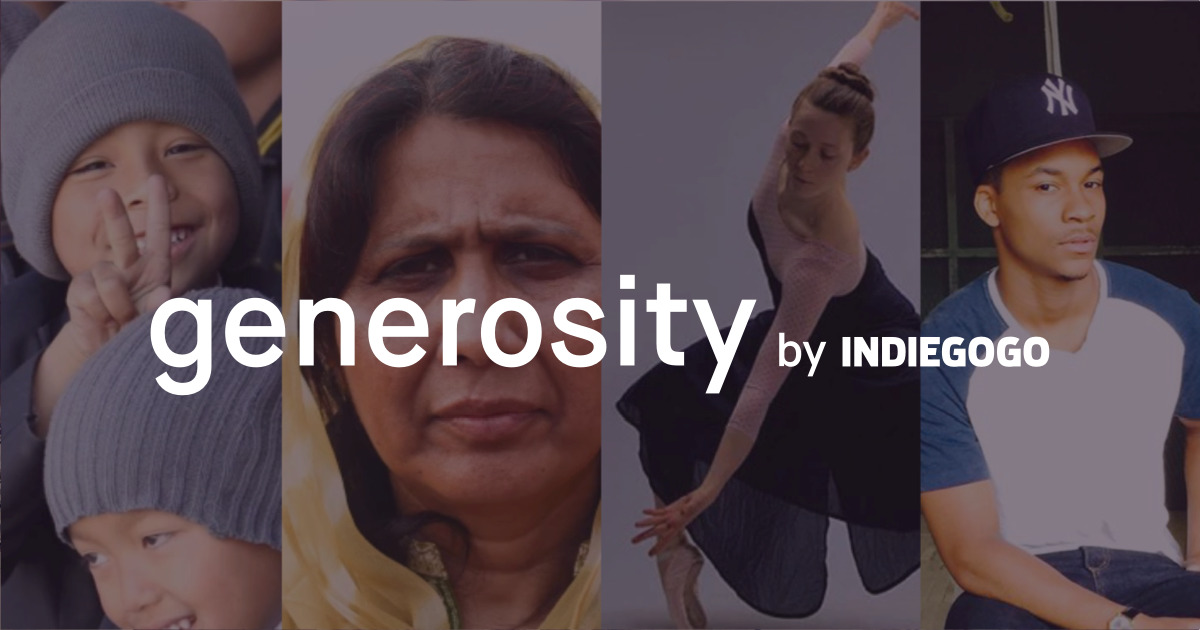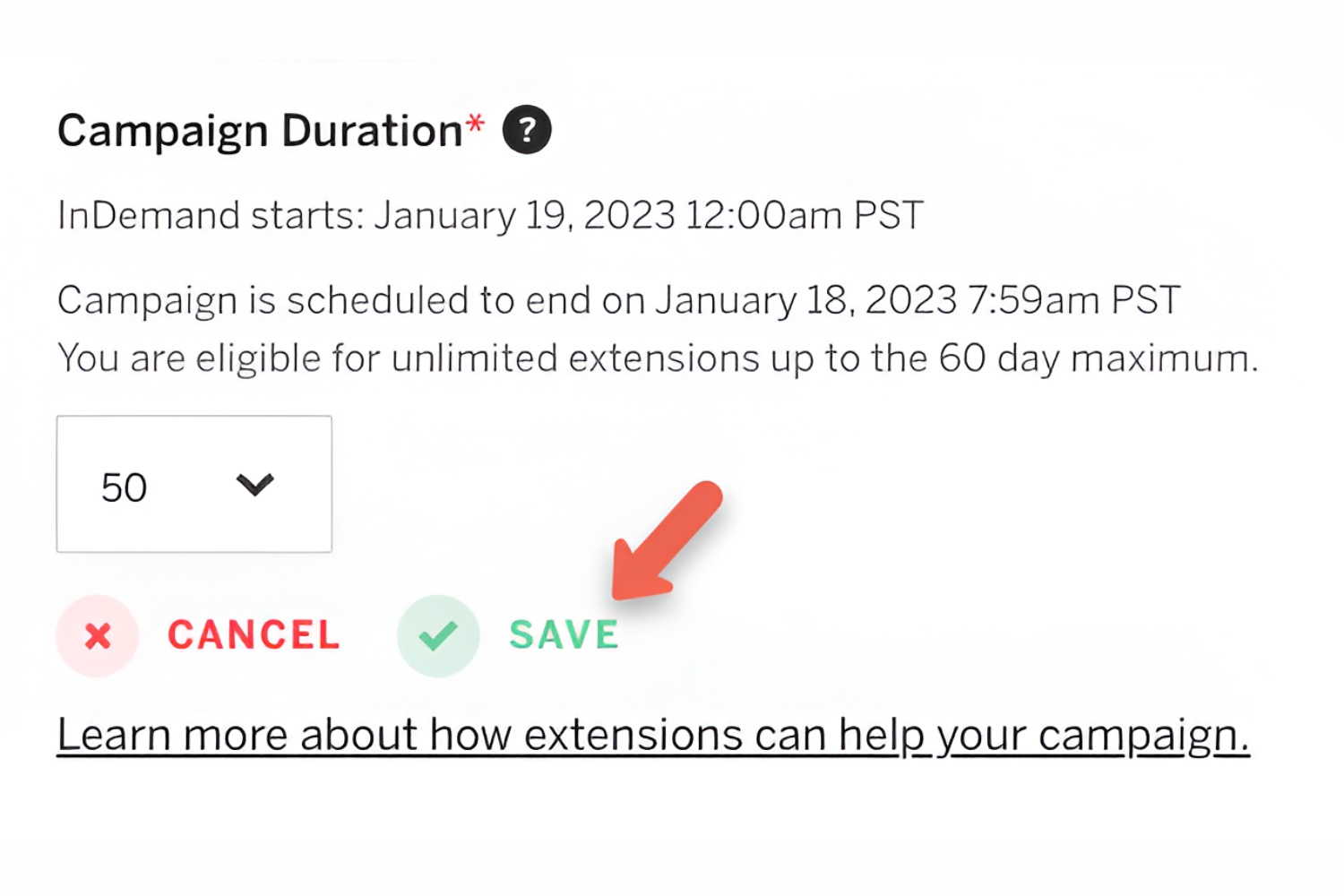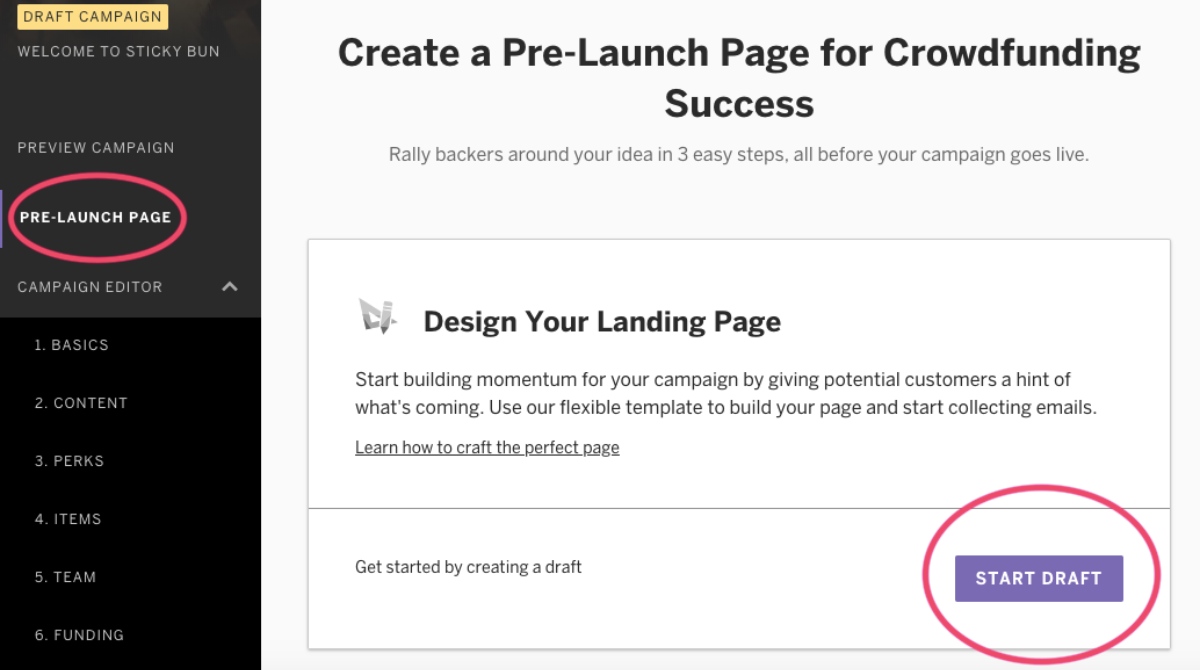Importance of Advertising for Indiegogo Campaigns
Advertising plays a crucial role in the success of an Indiegogo campaign by increasing visibility, attracting potential backers, and driving engagement. With thousands of campaigns competing for attention on the platform, a well-executed advertising strategy can give your project a significant advantage. Here’s why advertising is essential for Indiegogo campaigns:
1. Increased Visibility: Advertising ensures that your campaign reaches a wider audience beyond your immediate network. By targeting specific demographics and interests, you can reach individuals who may not have discovered your campaign otherwise.
2. Attracting Potential Backers: Effective advertising campaigns generate interest and capture the attention of potential backers, encouraging them to explore your project further. Compelling visuals, a compelling story, and enticing rewards can all be highlighted through advertising to entice individuals to pledge their support.
3. Driving Engagement: Advertising efforts are not only about increasing visibility but also about engaging with your target audience. By creating captivating content and compelling calls-to-action, you can encourage interactions, such as liking, sharing, and commenting on your campaign page or social media posts.
4. Creating Buzz: An Indiegogo campaign that generates buzz and excitement is more likely to attract attention and backer support. Advertising campaigns can create this buzz by leveraging creative content, unique messaging, and strategic placements on relevant platforms to generate anticipation and excitement for your project.
5. Gaining Credibility: A well-planned and executed advertising strategy can help establish your project’s credibility and professionalism. Consistent branding, high-quality visuals, and compelling messaging can instill trust in potential backers, increasing the likelihood of them pledging their support.
6. Reaching a Global Audience: Indiegogo allows you to reach a diverse, global audience, and advertising facilitates this reach. By targeting different regions, languages, and cultural nuances, you can expand your campaign’s reach beyond borders and tap into potential backers from around the world.
7. Maximizing Funding Potential: Ultimately, advertising helps maximize your campaign’s funding potential. The more individuals you can reach and engage with, the higher the chance of attracting more backers and achieving your funding goals.
In summary, advertising is crucial for Indiegogo campaigns as it increases visibility, attracts potential backers, drives engagement, creates buzz, establishes credibility, reaches a global audience, and maximizes funding potential. By investing time and resources into developing a well-thought-out advertising strategy, you can significantly increase your chances of running a successful Indiegogo campaign. So, don’t underestimate the power of advertising when it comes to promoting your project and reaching your fundraising goals.
Choosing the Right Advertising Channels
When it comes to promoting your Indiegogo campaign, choosing the right advertising channels is crucial. By selecting platforms that align with your target audience and campaign goals, you can effectively reach and engage potential backers. Here are some key factors to consider when choosing the right advertising channels:
1. Research Your Target Audience: Understanding your target audience is essential for selecting the most effective advertising channels. Who are they? What platforms do they frequent? Conduct thorough research to determine their demographics, interests, and behaviors, which will help you identify the platforms they are most likely to engage with.
2. Consider Social Media Platforms: Social media platforms like Facebook, Instagram, Twitter, and LinkedIn offer diverse advertising opportunities. With their extensive reach and robust targeting options, they can effectively promote your Indiegogo campaign. Analyze which platforms are popular among your target audience and focus your efforts there.
3. Explore Influencer Marketing: Collaborating with influencers who align with your campaign’s values can significantly amplify your reach. Seek out influencers in your niche or industry who have engaged and loyal followers. Their endorsement and promotion of your Indiegogo campaign can help attract a broader audience and increase credibility.
4. Consider Content Platforms: Content platforms like blogs, online magazines, and podcasts can provide valuable exposure for your campaign. Look for platforms that cater to your target audience and offer opportunities for sponsored content or guest posts. This allows you to share your campaign story, project updates, and rewards in a more engaging and personalized way.
5. Utilize Search Engine Marketing (SEM): SEM, including search engine optimization (SEO) and pay-per-click (PPC) ads, can enhance your campaign’s visibility in search engine results. Optimize your campaign page and content for relevant keywords to improve your organic search rankings. Additionally, running targeted PPC ads can place your campaign in front of individuals actively searching for similar projects.
6. Consider Email Marketing: Email marketing can be a powerful tool for reaching potential backers who have shown interest in your campaign. Build an email list and regularly update subscribers with campaign progress, exclusive updates, and early-bird rewards. Craft compelling emails that encourage recipients to visit and support your Indiegogo campaign.
7. Don’t Forget Offline Opportunities: While online advertising is crucial, don’t overlook offline opportunities to promote your campaign. This can include networking events, industry conferences, local community partnerships, and print media. These offline channels can help you reach individuals who may not be active online or who prefer more traditional forms of media.
Remember to track and analyze the performance of each advertising channel to identify which ones are driving the most engagement and contributions. Adjust your marketing efforts accordingly to maximize results.
In summary, choosing the right advertising channels for your Indiegogo campaign is essential for effectively reaching and engaging potential backers. Research your target audience, explore social media platforms, consider influencer marketing, utilize content platforms, leverage search engine marketing, consider email marketing, and explore offline opportunities. By selecting the most appropriate channels, you can increase your campaign’s visibility, attract the right audience, and boost your chances of success on Indiegogo.
Creating Engaging Content for Your Indiegogo Campaign
Engaging content is instrumental in capturing the attention and interest of potential backers for your Indiegogo campaign. Well-crafted content helps communicate your project’s story, showcase its unique value proposition, and persuade individuals to support your cause. Here are some tips for creating engaging content for your Indiegogo campaign:
1. Tell a Compelling Story: Your campaign should have a captivating narrative that resonates with your target audience. Share the inspiration behind your project, the problem it solves, and the impact it can make. Craft a story that evokes emotions and connects with potential backers on a personal level.
2. Use High-Quality Visuals: High-quality visuals are vital for capturing attention. Invest in professional product photos, videos, and graphics that showcase your project’s unique features and benefits. Ensure the visuals align with your brand and campaign message, helping to build trust and credibility.
3. Create Clear and Concise Messaging: Keep your messaging clear, concise, and easy to understand. Use simple language that resonates with your target audience, avoiding jargon or technical terms that may confuse readers. Communicate the key benefits of supporting your project in a compelling and straightforward manner.
4. Highlight Unique Rewards: The rewards you offer play a significant role in attracting backers. Clearly outline the rewards for different contribution levels, emphasizing their value. Make them unique and exclusive to your campaign to incentivize potential backers to support your project.
5. Include Social Proof: Incorporate testimonials, reviews, and case studies from satisfied customers or early backers to build trust and credibility. Social proof helps potential backers feel more confident in their decision to support your project.
6. Utilize Storytelling Videos: Videos are an incredibly effective medium for engaging potential backers. Create a compelling video that showcases your project, its benefits, and the people behind it. Tell a story that inspires, educates, and motivates viewers to become backers.
7. Regularly Update Your Campaign Page: Keep your campaign page fresh and engaging by regularly updating it with new content. This can include project updates, milestones reached, new rewards added, and testimonials from satisfied backers. Regular updates show progress and keep potential backers engaged throughout your campaign.
8. Encourage User Interaction: Engage with your audience by encouraging comments, questions, and discussions on your campaign page and social media platforms. Respond promptly to inquiries and engage in conversations. This fosters a sense of community and shows potential backers that you value their input.
9. Offer Limited-time Promotions: Create a sense of urgency and exclusivity by offering limited-time promotions or early-bird discounts. This incentivizes potential backers to act quickly and increases the chances of them pledging their support.
10. Share Behind-the-Scenes Content: Give potential backers a glimpse behind the scenes of your project’s development process. Share photos, videos, and stories that showcase the hard work, dedication, and passion that goes into bringing your idea to life. This helps humanize your campaign and build a connection with your audience.
In summary, creating engaging content is crucial for capturing the interest and support of potential backers for your Indiegogo campaign. Tell a compelling story, use high-quality visuals, create clear and concise messaging, highlight unique rewards, include social proof, utilize storytelling videos, regularly update your campaign page, encourage user interaction, offer limited-time promotions, and share behind-the-scenes content. By following these tips, you can create content that resonates with your audience, drives engagement, and increases the likelihood of successful campaign funding on Indiegogo.
Leveraging Social Media to Promote Your Indiegogo Campaign
Social media platforms offer a powerful and cost-effective way to promote your Indiegogo campaign, reach a wider audience, and engage potential backers. With billions of active users, leveraging social media effectively can significantly increase your campaign’s visibility and chances of success. Here are some tips for leveraging social media to promote your Indiegogo campaign:
1. Choose the Right Platforms: Identify the social media platforms that your target audience frequents the most. Whether it’s Facebook, Instagram, Twitter, LinkedIn, or others, focus your efforts on platforms that align with your campaign’s target demographics and interests.
2. Create a Compelling Profile: Optimize your social media profiles to reflect your Indiegogo campaign branding and messaging. Use high-quality visuals, a concise and engaging bio, and relevant links to your campaign page. Ensure consistency across all platforms to build a strong and recognizable online presence.
3. Craft Shareable Content: Create content that is highly shareable and resonates with your target audience. This can include captivating images, informative videos, engaging blog posts, and compelling call-to-action messages. Encourage followers to share your campaign with their networks to amplify your reach.
4. Engage and Interact: Actively engage with your social media audience by replying to comments, answering questions, and acknowledging their support. Establishing a two-way communication channel builds trust, strengthens relationships, and encourages further engagement. Follow relevant influencers, industry leaders, and potential backers to expand your reach even further.
5. Utilize Hashtags: Incorporate relevant hashtags in your social media posts to increase visibility and discoverability. Research popular and trending hashtags in your niche or industry and use them strategically in your campaign-related content. This helps attract individuals who are searching for similar projects or interests.
6. Run Social Media Ads: Consider running targeted social media ads to further promote your Indiegogo campaign. Platforms like Facebook and Instagram offer robust ad targeting options, allowing you to reach specific demographics, interests, and locations. Design eye-catching ad creatives and compelling ad copy to capture the attention of potential backers.
7. Collaborate with Influencers: Engage with influencers in your niche who have a following that aligns with your target audience. Collaborate on sponsored posts, giveaways, or endorsements where the influencer promotes your campaign to their audience. This exposes your campaign to a wider and more engaged audience.
8. Create Contests and Giveaways: Encourage social media users to participate in contests and giveaways related to your campaign. Offer exclusive rewards or incentives for sharing your campaign, tagging friends, or posting about your project. This not only generates buzz but also increases your campaign’s visibility through user-generated content.
9. Share Campaign Updates Regularly: Keep your social media followers up to date with regular campaign updates. Share milestones, progress, new rewards, and success stories to maintain their interest and engagement. Create a sense of excitement and anticipation throughout the campaign duration.
10. Track and Analyze Performance: Utilize social media analytics tools to track the performance of your social media campaigns. Monitor engagement metrics, such as likes, shares, comments, and click-through rates. Analyze the data to identify the types of content that resonate the most with your audience and refine your social media strategy accordingly.
In summary, leveraging social media is a powerful and effective way to promote your Indiegogo campaign. Choose the right platforms, create compelling profiles, craft shareable content, engage and interact with your audience, utilize hashtags, run social media ads, collaborate with influencers, create contests and giveaways, share campaign updates regularly, and track performance. By implementing these strategies, you can maximize the reach and impact of your Indiegogo campaign, ultimately increasing your chances of success.
Building Relationships with Influencers and Bloggers
Building relationships with influencers and bloggers is a strategic approach to expand the reach and impact of your Indiegogo campaign. Collaborating with influencers who have a dedicated following in your target audience can significantly enhance your campaign’s visibility and attract more potential backers. Here are some key steps to building relationships with influencers and bloggers:
1. Identify Relevant Influencers and Bloggers: Research influencers and bloggers in your niche or industry who have an engaged and loyal following. Look for individuals whose audience aligns with your target backers. Consider factors such as follower count, engagement rates, and the quality of content they produce.
2. Engage with Their Content: Like, comment, and share the content posted by influencers and bloggers you want to connect with. Show genuine interest in their work and contribute valuable insights to their discussions. This helps create visibility for your own brand and builds rapport with them.
3. Personalize Your Outreach: When reaching out to influencers and bloggers, make your communication personalized and tailored to their interests and expertise. Avoid generic messages and demonstrate that you have taken the time to study their work. Highlight how collaborating with you can benefit both parties.
4. Offer Value: Provide influencers and bloggers with a clear value proposition. Explain how partnering with you can bring value to their audience, such as exclusive content, early access to your product, or the opportunity to support a cause they care about. Make the collaboration mutually beneficial.
5. Collaborate on Sponsored Content: One effective way to engage influencers and bloggers is through sponsored content. Offer to sponsor a blog post, video review, or social media post that focuses on your Indiegogo campaign. Ensure that the content highlights the unique aspects of your project and encourages their audience to support it.
6. Extend Reach Through Giveaways: Organize giveaways in collaboration with influencers and bloggers. This can involve offering your campaign rewards as prizes or exclusive discounts to their audience. Giveaways generate excitement and engagement, attracting more potential backers to your campaign.
7. Provide Exclusive Updates: Keep influencers and bloggers informed about your campaign’s progress and key updates. Share exclusive content, such as behind-the-scenes insights, early product prototypes, or campaign milestones reached. This encourages them to share the latest updates with their audience.
8. Show Gratitude and Reciprocation: Acknowledge and appreciate the efforts of influencers and bloggers who support your campaign. Thank them publicly, share their content, and reciprocate the support they have shown you. Building long-term relationships based on mutual respect and collaboration is essential.
9. Measure and Evaluate Results: Track the performance and impact of your collaborations with influencers and bloggers. Monitor engagement metrics, such as clicks, conversions, and campaign referrals. Analyze the data to determine which partnerships have been the most successful and refine your approach accordingly.
10. Nurture Ongoing Relationships: Building relationships with influencers and bloggers is an ongoing process. After your campaign concludes, maintain communication and continue supporting their work. This sets the foundation for potential collaborations in the future that can benefit both parties.
In summary, building relationships with influencers and bloggers is a valuable strategy to extend the reach and impact of your Indiegogo campaign. Identify relevant influencers and bloggers, engage with their content, personalize your outreach, offer value, collaborate on sponsored content, extend reach through giveaways, provide exclusive updates, show gratitude and reciprocation, measure and evaluate results, and nurture ongoing relationships. By effectively leveraging these relationships, you can amplify the visibility of your campaign and attract more potential backers.
Utilizing Email Marketing to Reach Potential Backers
Email marketing is a powerful tool for reaching and engaging potential backers for your Indiegogo campaign. By building an email list and leveraging targeted campaigns, you can deliver personalized content directly to the inboxes of individuals who have shown interest in your project. Here are some key strategies for utilizing email marketing to reach potential backers:
1. Build an Email List: Start by building an email list of individuals who have expressed interest in your campaign through sign-up forms on your website, social media, or other channels. Offer incentives such as exclusive content or early access to encourage sign-ups.
2. Create Compelling and Personalized Content: Craft compelling email content that resonates with your subscribers. Personalize your messages by addressing recipients by name and segmenting your email list based on their interests or engagement level. Tailor the content to their specific needs and showcase the value of supporting your campaign.
3. Send Regular Campaign Updates: Keep subscribers engaged and informed by sending regular campaign updates. Share milestones reached, new rewards added, and exciting developments. Use visually appealing images, videos, and compelling storytelling to capture their attention and generate excitement.
4. Encourage Social Sharing: Include social sharing buttons in your email campaigns to make it easy for subscribers to share your campaign with their networks. Encourage them to forward your emails to friends and family who might be interested in supporting your project. Word-of-mouth referrals can have a significant impact on expanding your campaign’s reach.
5. Offer Exclusive Content and Early Access: Provide your email subscribers with exclusive content and early access to campaign updates, discounts, or special rewards. This makes them feel like valued insiders and incentivizes them to support your campaign and share it with others.
6. Segment Your Email List: Segment your email list based on different criteria, such as demographics, pledge history, or engagement level. This allows you to send targeted emails to specific segments, tailoring the content and messaging to their specific interests and needs. This personalized approach improves the effectiveness of your email campaigns.
7. Automate Email Sequences: Set up automated email sequences to nurture potential backers and guide them through the campaign journey. For example, send a welcome email to new subscribers, followed by a series of emails introducing the campaign, highlighting rewards, and providing social proof. Automating these sequences saves time and keeps potential backers engaged.
8. Use Eye-Catching Subject Lines: Grab the attention of your subscribers with compelling subject lines that entice them to open your emails. Experiment with different subject lines and analyze open rates to determine what resonates best with your audience.
9. Optimize for Mobile: With the majority of emails being opened on mobile devices, ensure that your email campaigns are optimized for mobile viewing. Use responsive email templates and preview your emails on various devices to ensure a seamless and engaging experience across all platforms.
10. Measure and Analyze Results: Track and measure the performance of your email campaigns using email marketing analytics. Monitor metrics such as open rates, click-through rates, and conversions. Analyze the data to identify trends, refine your email strategy, and improve the effectiveness of your campaigns.
In summary, email marketing is a powerful tool for reaching and engaging potential backers for your Indiegogo campaign. Build an email list, create compelling and personalized content, send regular campaign updates, encourage social sharing, offer exclusive content and early access, segment your email list, automate email sequences, use eye-catching subject lines, optimize for mobile, and measure and analyze results. By implementing these strategies, you can maximize the impact of your email marketing efforts and increase the likelihood of attracting more backers to support your Indiegogo campaign.
Collaborating with Indiegogo’s Marketing Tools and Resources
When running an Indiegogo campaign, collaborating with Indiegogo’s marketing tools and resources can greatly enhance your campaign’s visibility and reach. Indiegogo offers a range of built-in marketing features and resources that can help you maximize the impact of your campaign. Here are some ways you can collaborate with Indiegogo’s marketing tools and resources:
1. Indiegogo Campaign Page: Your campaign page serves as the central hub for your project. Collaborate with Indiegogo’s built-in tools to optimize your campaign page. Utilize high-quality visuals, compelling storytelling, and clear calls-to-action to engage potential backers and showcase your project effectively.
2. Campaign Analytics: Indiegogo provides analytics tools to track the performance of your campaign. Analyze metrics such as visits, conversions, and referral sources to gain insights into your campaign’s reach and effectiveness. Use this data to refine your marketing strategy and target specific areas for improvement.
3. Indiegogo Newsletter and Blog: Indiegogo features standout campaigns in their newsletter and blog, which reach a large audience of potential backers. Submit your campaign for consideration to increase its visibility. Craft a compelling pitch and highlight the unique aspects of your project to capture their attention.
4. Partner Promotions: Indiegogo collaborates with various partners to offer special promotions and marketing opportunities to select campaigns. Take advantage of these partnerships to gain additional exposure for your project. Keep an eye on Indiegogo’s partner promotions and apply when appropriate to enhance your campaign’s reach.
5. Participate in Indiegogo Events: Indiegogo organizes events, both offline and online, to showcase campaigns and connect project creators with potential backers. Participate in these events to network with like-minded individuals, gain exposure, and receive guidance from industry experts. These events provide valuable opportunities to raise awareness of your campaign.
6. Indiegogo Crowdfunding Guide: Indiegogo provides a comprehensive Crowdfunding Guide that offers tips, best practices, and guidance for running a successful campaign. Take advantage of this resource to access valuable information and insights on campaign planning, promoting, and managing your project.
7. Backer Support: Indiegogo offers support services to both campaign owners and backers. Collaborate with Indiegogo’s support team to address any issues or questions raised by your backers. Providing excellent customer service and support can help build trust and maintain positive relationships with your backers.
8. Indiegogo InDemand: Indiegogo’s InDemand feature allows you to continue fundraising even after your initial campaign has ended. Collaborate with InDemand to keep your campaign active and accept contributions from new backers. Leverage the momentum and interest generated during your campaign to further grow your funding.
9. Indiegogo Social Media Channels: Indiegogo maintains an active presence on various social media platforms. Engage with their social media channels by tagging them in your campaign-related posts, using relevant hashtags, or participating in their discussions. This can help increase your campaign’s visibility and attract the attention of their followers.
10. Affiliate Program: Indiegogo’s affiliate program allows you to collaborate with influencers and website owners who can promote your campaign. Provide them with unique tracking links and offer a commission for each contribution they generate. This helps expand your reach through their established networks.
In summary, collaborating with Indiegogo’s marketing tools and resources can significantly enhance the visibility and reach of your campaign. Optimize your campaign page, utilize campaign analytics, submit your project for newsletter and blog features, explore partner promotions, participate in Indiegogo events, leverage the Crowdfunding Guide, provide excellent backer support, utilize InDemand, engage with Indiegogo’s social media channels, and utilize the affiliate program. By leveraging these resources, you can maximize the impact and success of your Indiegogo campaign.
Implementing Search Engine Optimization (SEO) Techniques
Implementing search engine optimization (SEO) techniques is crucial for improving the visibility and discoverability of your Indiegogo campaign in search engine results. By optimizing your campaign page and content for relevant keywords, you can attract organic traffic and increase the chances of reaching potential backers. Here are some key SEO techniques to implement for your Indiegogo campaign:
1. Keyword Research: Conduct thorough keyword research to identify the most relevant and high-performing keywords for your campaign. Look for keywords that have a good search volume and are related to your project, its benefits, and the problem it solves. These keywords should be integrated strategically throughout your campaign content.
2. Optimize Page Titles and Meta Descriptions: Craft compelling and keyword-rich page titles and meta descriptions for your campaign page. These elements appear in search engine results and can greatly impact click-through rates. Keep them concise, engaging, and accurately represent the content of your campaign.
3. Create High-Quality, Unique Content: Develop high-quality, unique, and relevant content for your campaign page and updates. Make sure your campaign content addresses the needs, desires, and interests of potential backers. Avoid duplicate content or keyword stuffing, as this can negatively impact your search engine rankings.
4. Optimize URL Structure: Ensure your campaign page URL is short, descriptive, and includes relevant keywords. A clean and easily understandable URL structure can improve search engine visibility and help users understand the content of your page.
5. Optimize Image Alt Text: Use descriptive alt text for campaign images, incorporating relevant keywords where appropriate. This helps search engines understand the content of the images and can improve your campaign’s visibility in image search results.
6. Improve Page Loading Speed: Optimize your campaign page to load quickly and efficiently. Slow-loading pages can negatively impact user experience and search engine rankings. Compress images, minimize code, and leverage caching to improve page loading speed.
7. Build High-Quality Backlinks: Earn high-quality backlinks from reputable websites and influencers in your industry or niche. Backlinks from authoritative sources can improve your campaign’s credibility and search engine rankings. Seek out opportunities for guest blogging, collaborations, or partnerships to secure backlinks.
8. Utilize Schema Markup: Implement schema markup on your campaign page to provide search engines with additional information about your project. This can enhance the appearance of your search engine listings, making them more visually appealing and informative to potential backers.
9. Include Social Sharing Buttons: Integrate social sharing buttons on your campaign page to encourage visitors to share your content on social media platforms. This can increase the exposure and reach of your campaign, potentially attracting more organic traffic.
10. Regularly Monitor and Analyze: Utilize SEO tools and analytics to monitor the performance of your campaign page in search engine rankings. Track keyword rankings, organic traffic, and user engagement metrics. Analyze the data to identify areas for improvement and refine your SEO strategy accordingly.
In summary, implementing SEO techniques is essential for improving the visibility and discoverability of your Indiegogo campaign. Conduct keyword research, optimize page titles and meta descriptions, create high-quality content, optimize URL structure and image alt text, improve page loading speed, build high-quality backlinks, utilize schema markup, include social sharing buttons, and regularly monitor and analyze performance. By implementing these SEO techniques, you can increase organic traffic, attract potential backers, and improve the overall success of your Indiegogo campaign.
Using Paid Advertising to Boost Your Indiegogo Campaign
Using paid advertising is an effective strategy to boost the visibility and reach of your Indiegogo campaign, especially when it comes to targeting specific audiences and accelerating your fundraising efforts. Paid advertising allows you to leverage various platforms to reach potential backers and increase campaign engagement. Here are some key considerations and tactics for using paid advertising to boost your Indiegogo campaign:
1. Define Your Target Audience: Before launching any paid advertising campaigns, define your target audience. Understand their demographics, interests, and behaviors so you can tailor your ads accordingly. This will help you achieve higher relevance and better conversion rates.
2. Select the Right Advertising Platforms: Choose the advertising platforms that align with your target audience and campaign goals. Consider options such as social media platforms (Facebook Ads, Instagram Ads, Twitter Ads), search engine advertising (Google Ads), and native advertising platforms.
3. Create Engaging Ad Content: Craft compelling ad content that captures attention and entices potential backers to click through to your campaign page. Use high-quality visuals, concise and persuasive messaging, and clear calls-to-action to maximize the effectiveness of your ads.
4. Utilize Retargeting: Implement retargeting campaigns to target individuals who have already shown interest in your campaign. This allows you to remind them of your project and encourage them to take action, increasing the likelihood of conversion.
5. Set a Realistic Budget: Consider your available resources and set a realistic budget for your paid advertising campaigns. Start with a modest budget and monitor the performance of your ads. Based on the results, adjust and optimize your advertising budget accordingly.
6. Optimize Your Landing Page: Ensure that your landing page is optimized to convert visitors into backers. Make sure the messaging and design align with your ads, and the call-to-action is clear and compelling. Continuously test and refine your landing page to improve conversion rates.
7. Analyze and Optimize Campaigns: Regularly monitor the performance of your paid advertising campaigns. Analyze key metrics such as click-through rate, conversion rate, and cost per conversion. Identify underperforming campaigns or ad variants and make necessary adjustments to optimize your results.
8. Utilize A/B Testing: Conduct A/B testing to identify high-performing ad variations and optimize your campaigns. Experiment with different ad copy, visuals, targeting options, and landing page elements. Test one variable at a time to accurately assess what drives better results and make iterative improvements.
9. Consider Collaborations and Influencer Marketing: Explore partnerships with influencers or blogs in your niche who can promote your campaign through sponsored posts or endorsements. Collaborations can significantly expand your reach and credibility within your target audience.
10. Track Return on Investment: Track the return on investment (ROI) for your paid advertising campaigns. Calculate the revenue generated from the ads and compare it to the cost of the ads. This will help you understand the effectiveness and profitability of your advertising efforts.
In summary, utilizing paid advertising is a powerful approach to boost the visibility and success of your Indiegogo campaign. Define your target audience, select the appropriate advertising platforms, create engaging ad content, utilize retargeting, set a realistic budget, optimize your landing page, analyze and optimize your campaigns, utilize A/B testing, consider collaborations and influencer marketing, and track return on investment. By effectively implementing paid advertising strategies, you can attract more potential backers, increase engagement, and maximize the impact of your Indiegogo campaign.
Measuring and Analyzing the Effectiveness of Your Advertising Efforts
Measuring and analyzing the effectiveness of your advertising efforts is crucial for understanding the impact of your campaigns and making data-driven decisions to optimize your Indiegogo campaign. By tracking key metrics and analyzing the results, you can identify what is working well and make necessary adjustments to improve your advertising strategy. Here are some important steps to measure and analyze the effectiveness of your advertising efforts:
1. Set Clear Goals: Clearly define your advertising goals before launching any campaigns. Whether it’s increasing campaign visibility, driving traffic to your Indiegogo page, or generating conversions, having specific goals will help you measure and analyze the effectiveness of your advertising efforts.
2. Track Key Metrics: Identify the key performance indicators (KPIs) that align with your goals and track them consistently. These metrics may include click-through rate (CTR), conversion rate, cost per click (CPC), return on ad spend (ROAS), and overall campaign revenue. Use tracking tools and analytics platforms to monitor and record these metrics accurately.
3. Compare Performance Across Channels: If you are running ads on multiple platforms, compare the performance of your campaigns across different channels. Look for patterns and trends in the data to identify which channels are generating the most engagement and conversions. This will help you allocate resources more effectively.
4. Segment and Analyze Audience Data: Utilize audience data insights to segment and analyze the performance of your ads. Look at demographic data, such as age, gender, location, or interests, to understand which segments are responding better to your campaigns. Use this information to refine your targeting and messaging strategies.
5. Conduct A/B Testing: A/B testing allows you to experiment with different ad variants and compare their performance. Test different ad copy, visuals, call-to-action buttons, or landing page elements to see which variations resonate better with your audience. Analyze the results and apply the learnings to optimize your campaigns.
6. Analyze Conversion Funnels: Study the conversion funnels to understand how individuals are progressing through the different stages, from viewing your ad to becoming a backer. Identify any bottlenecks or drop-off points in the funnel that may hinder conversions. Optimize these areas to improve the overall campaign performance.
7. Consider Incremental Lift: Measure the incremental lift that your advertising efforts provide. Compare the performance of your campaign group (those exposed to your ads) with a control group (those not exposed to your ads). Analyze the difference in conversion rates and revenue to determine the true impact of your advertising efforts.
8. Monitor Cost Efficiency: Keep a close eye on the cost efficiency of your campaigns. Compare the cost per conversion or cost per click across different platforms and ad variations. Identify opportunities to reduce costs while maintaining or improving conversion rates to maximize your return on investment (ROI).
9. Continuously Optimize: Use the insights gained from your measurement and analysis to refine and optimize your advertising efforts. Make data-driven decisions to adjust targeting, messaging, ad placements, or budgets. Regularly test new strategies and tactics to stay ahead of the competition and improve campaign performance.
10. Monitor Competitor Performance: Keep tabs on your competitors’ advertising strategies and performance. Analyze their messaging, targeting, and creative approaches to gain insights and identify potential opportunities or gaps in the market. Use this information to refine your own advertising efforts and stay ahead of the competition.
In summary, measuring and analyzing the effectiveness of your advertising efforts is essential for optimizing your Indiegogo campaign. Set clear goals, track key metrics, compare performance across channels, segment and analyze audience data, conduct A/B testing, analyze conversion funnels, consider incremental lift, monitor cost efficiency, continuously optimize, and monitor competitor performance. By leveraging these insights, you can make informed decisions and improve the impact of your advertising efforts on your Indiegogo campaign.









